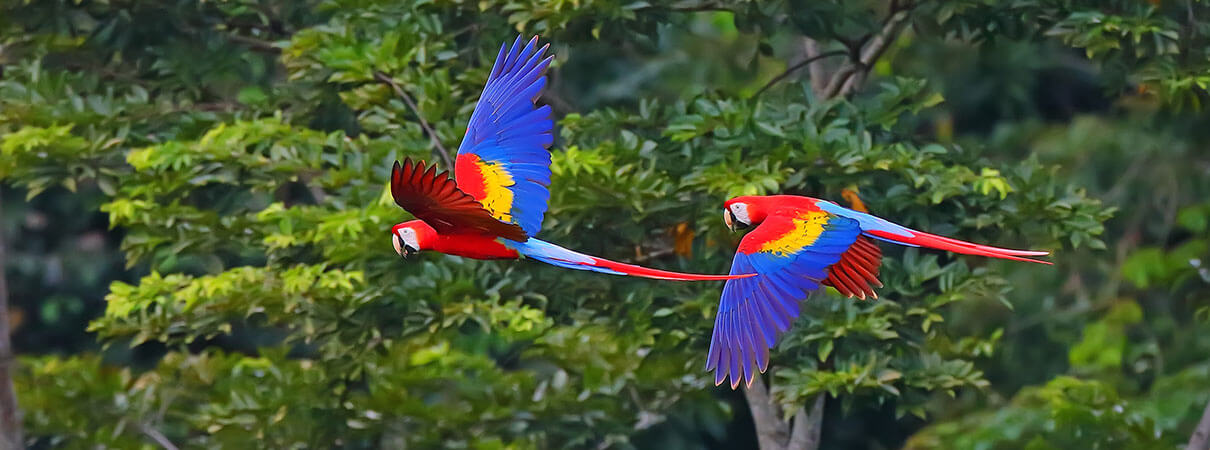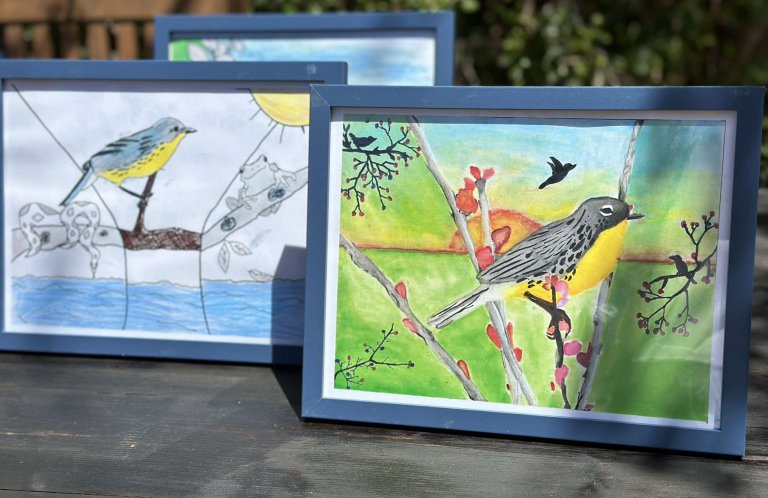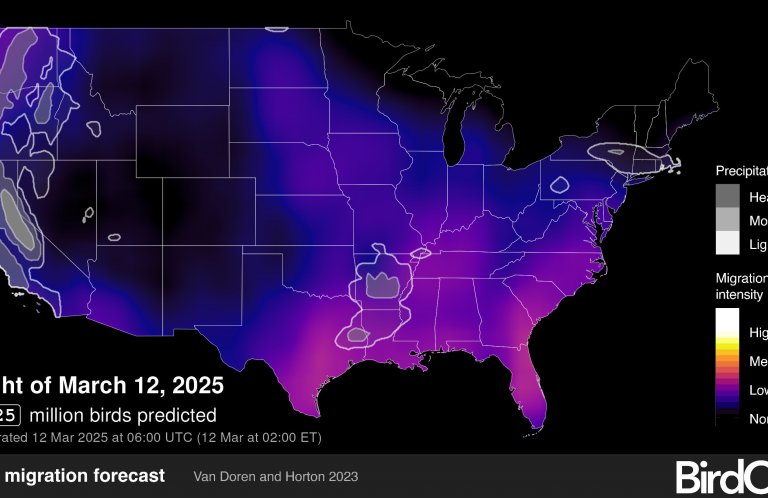Birds in Brief — Bird Conservation Updates, Summer 2019
Need some good news about birds, fast? This round-up of stories highlights heartening advances in efforts to conserve some of the Western Hemisphere's most endangered bird species.
Townsend's Shearwater Nesting Success in Mexico

Townsend's Shearwater. Photo by GECI
ABC partner Grupo de Ecología y Conservación de Islas (GECI) reports that a Critically Endangered Townsend's Shearwater has successfully nested in an artificial nest burrow on Socorro Island, off Mexico's western coast. GECI scientists recorded a banded bird alongside a week-old chick.
This success was the culmination of a program supported by ABC and partners that started in 2016. To encourage nesting, GECI biologists provided artificial nest burrows that simulate the birds' natural burrows. There are 40 such burrows currently on Socorro, where GECI and ABC are also working to remove introduced species and restore habitat.
Wild 'Alalā Nest Attempts Raise Hope

‘Alalā. Photo by Jack Jeffrey
Several pairs of reintroduced ‘Alalā (Hawaiian Crow) attempted to nest in the wild on the island of Hawai‘i this spring — the first such attempt in almost 20 years. Although the birds did not raise young, the birds' nesting and incubation behaviors are considered a major milestone toward re-establishing the species in the wild.
The ‘Alalā has been extinct in the wild since 2002 as a result of introduced predators and diseases. The ʻAlalā Project, a partnership among the State of Hawaiʻi Division of Forestry and Wildlife, the U.S. Fish and Wildlife Service, and San Diego Zoo Global, is behind this hopeful news for the species. Approximately 115 of the birds now live in breeding centers, while 19 are living in the wild.
Antioquia Brushfinch Found in the Wild

Antioquia Brushfinch. Photo by Sergio Chaparro
A rusty-crowned Colombian songbird known only from old museum specimens, the Antioquia Brushfinch eluded scientists — until it was found for the first time in the wild in January 2018. This discovery will be published later this year in the scientific journal Cotinga.
After the initial find, Colombian researchers found additional birds in four patches of remnant habitat, all within the department of Antioquia. Some of the parcels are already being converted to agriculture, however. ABC and our partners are working to create a reserve for this rare bird and its habitat.
Kirtland's Warbler Gets Help on Winter Quarters

Kirtland's Warbler. Photo by USFWS
Each fall, the Kirtland's Warbler migrates south and winters almost exclusively in the Bahamas.
ABC has been able to hire an avian ecologist through the Bahamas National Trust. Bahamian scientist Bradley Watson will carry out conservation work targeting the bird's winter range, part of a plan to keep the Kirtland's Warbler population growing after its expected removal from the U.S. endangered species list.
Scarlet Macaw Subspecies Gains Endangered Status

Scarlet Macaws. Photo by Greg Homel/Natural Elements Productions
David Wiedenfeld, ABC's Senior Conservation Scientist, formally described the northern population of the Scarlet Macaw as a distinct subspecies, Ara macao cyanoptera, in 1994.
Conservationists consider this population, which occurs in small, isolated forests from southern Mexico to Costa Rica, to be imperiled. Twenty-five years later, the U.S. Fish and Wildlife Service has listed this subspecies as Endangered, which will boost conservation efforts for its habitat and help protect this macaw from illegal international trade.
Eight Palila Released

Palila. Photo by Jack Jeffrey
This summer, eight Critically Endangered Palila were released on the island of Hawai‘i, on Mauna Kea's northern slope. The birds were hatched and raised at a San Diego Zoo Global facility, and are the first Palila to be reintroduced since 2009. Although not all of the birds have survived the reintroduction, conservationists are hopeful that the remaining birds will help to found a second wild population. They are being closely monitored, and plans are underway to release more birds in the future.
ABC helps fund the project and collaborates with San Diego Zoo Global, the State of Hawai‘i Department of Land and Natural Resources (Division of Forestry and Wildlife), the Pacific Cooperative Studies Unit at the University of Hawai‘i at Mānoa, and the U.S. Fish and Wildlife Service.
Blue-eyed Ground-Dove Chick Hatches in the Wild
This May, a staff member from ABC partner Sociedade para a Conservação das Aves do Brasil (SAVE Brasil) photographed a juvenile Blue-eyed Ground-Dove within SAVE Brasil's Blue-eyed Ground-Dove Reserve — exciting proof that recent conservation measures for this Critically Endangered species are working.
The reserve is part of the newly established 88,175-acre Botumirim State Park, in the Brazilian state of Minas Gerais. The Blue-eyed Ground-Dove only numbers approximately 20 individuals. Many ornithologists feared the species extinct until its rediscovery in 2015.
ABC is supporting efforts to try to find other populations, and is supporting a workshop with experts to create a captive-breeding strategy for the species.
Innovative Approach Cuts Crane-Powerline Collisions

Sandhill Cranes. Photo by Richard Sustanto/Shutterstock.
Researchers found they can cut crane-powerline collisions by 98 percent at an important migration stopover in Nebraska's Central Platte Valley. These impressive results, published in The Condor in May, stem from an innovation that uses near-ultraviolet lights on support structures to illuminate powerlines during periods of low light.
This new system, dubbed the Avian Collision Avoidance System (ACAS), will hopefully be tested and deployed at other powerline sites, and at communication towers, another significant source of bird collisions.
MOTUS Tower Installed in Nicaragua
ABC and the Missouri Department of Conservation recently financed the installation of a MOTUS tower at the El Jaguar Reserve in Nicaragua — the first in that country and the sixth in Central America. ABC assisted logistically as well by bringing needed equipment to the reserve. MOTUS (the Latin word for “movement”) is a global network of towers managed by Bird Studies Canada, which uses radio telemetry to track movements of birds, bats, and even large insects.
At El Jaguar, the new MOTUS tower will capture signals from any appropriately radio-tagged bird passing or stopping nearby. The cumulative data gathered as tagged birds pass various MOTUS towers helps shed further light on migratory pathways, helping ABC and its partners design even more effective full-life-cycle conservation actions.
ABC hopes to help install additional towers in Central and South America, including in the Conservation Coast BirdScape of Guatemala.
Visit motus.org for more information on the MOTUS tracking system.


















































